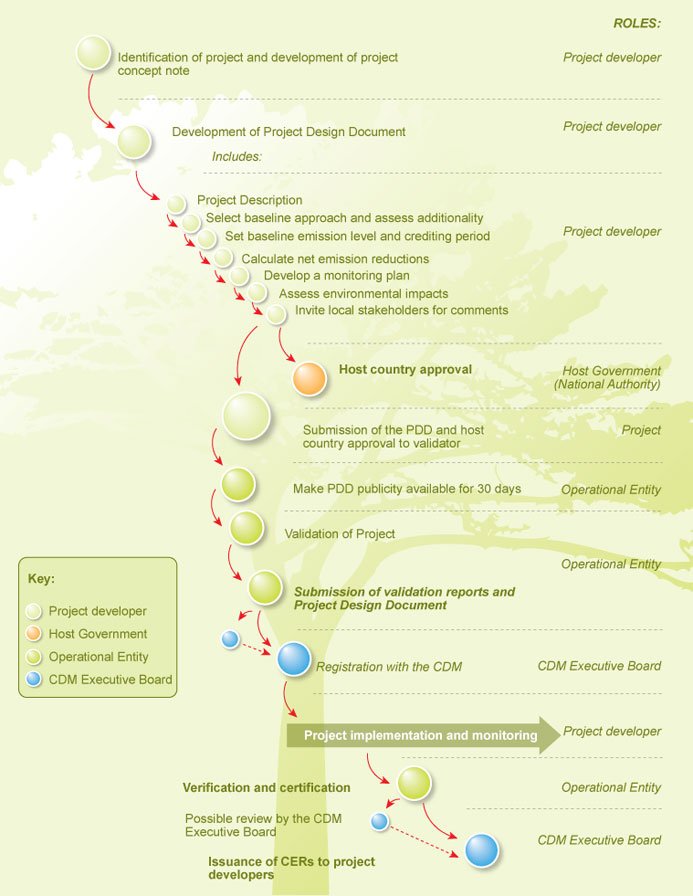BACKGROUND
The Clean Development Mechanism (CDM) was initiated under Kyoto Protocol of the United Nation Framework Convention on Climate Change (UNFCCC) in order to explore cost effective option to mitigate impacts of climate change. This puts obligations on governments and companies of industrialized countries (developed nations) to reduce their emission providing opportunity to reach their quantified emission limitation by financing emission reduction projects in developing countries which makes Pakistan eligible to benefit from it.
The Kyoto Protocol was adopted by UNFCCC in its Conference of Parties held in Kyoto, Japan in December 1997.
The Government of Pakistan got accession to the Kyoto Protocol on 11th January, 2005.
THE PROJECT
The Gulpur Hydropower Project will generate clean, renewable, reliable and sustainable energy to offset power shortages in the country, utilizing existing hydropower potential in the country, and will replace electricity otherwise supplied by dominant existing or future planned thermal power sources to the extent of its generation. The Project shall contribute to GHG emission reduction by displacing oil fired expensive thermal power.
The project is consistent with the national laws and sustainable development policies, strategies, plans and addresses the national sustainable development.
WAY FORWARD
Mira Power Limited will utilize the company’s resources of Project Development team who will make the Project Design Document in-house in line with prevailing methodologies and tools. The in-house team will then apply for Host Country approval, appoint the Designated Operational Entity (DOE) for validation of Project activity and complete the validation & registration process with DOE. This assignment will save all the costs of CDM Consultant and out-of-pocket. The team includes following members:
- Mr. Yoon, Tae-Hak, CEO
- Mr. Kyung Man Kim, Deputy CEO
- Mr. Sultan Ahmad, COO
- Ms. Kiran Fatima
- Mr. Shahid Javed (lead)
BENEFITS OF PARTICIPATION IN CDM PROJECTS
- The CDM assists the host parties in achieving sustainable development, technology transfer or investment and contributing to ultimate objective of the convention.
- CDM can provide additional revenue in the form of CER to the project, whereby it can be financially feasible with the use of CER. Acquisition of CER under CDM will improve the cash flow of the project.
- CDM will promote introduction and transfer of the state-of-art technologies to the host countries.
- Application of GHGs emission reduction technologies through CDM can also be a measure for the solution of various environment pollution issues, e.g. air pollution, water pollution, waste management, and so forth
- Some of GHGs emission reduction technologies may increase productivity through achievement of energy and raw materials saving.
- CDM will increase the opportunities of business partnership with foreign companies that may trigger business market expansion for the private sector in host countries.
- CDM will lead to promotion of renewable energy utilisation instead of non-renewable energy use, which will contribute energy security in the country.
REGISTRATION PROCESS
The registration of the Project as CDM activity before UNFCCC involve following process:
-
Planning the Project as CDM Activity
- Identification of Project as CDM activity
- Developing a Project Idea Note
- Filing and submission of Prior Consideration Form with UNFCCC & Host Country
- Obtaining LOI/NOC from Host Country
-
Developing of Project Design Document (PDD)
- Project Description with details of technology, environment impacts and sustainable development details
- Use of latest approved baseline methodologies and tools
- Assessment of concept of additionality through Financial Model
- Set baseline emission level and crediting period
- CER calculation through technical model
- Monitoring Plan
- Assessment of Environment Impacts
- Local stakeholder comments & supporting documentation
-
Host Country Approval
A written approval of voluntary participation from Designated National Authority (Host Country) by submitting an application with PDD with a compliance report with respect to environmental and sustainable development laws of Pakistan.
-
Validation of Project from UNFCCC Designated Operational Entity
- Selection of DOE accredited by UNFCCCC
- Provision of documentation to DOE
- DOE’s site visit facilitation
- Completeness check and Global Stakeholders’ comments
- Draft Report issuance with Corrective Actions and Clarification requests
- Response to Corrective Actions and Clarification Requests
-
Registration with Executive Board of UNFCCC
- Submission of registration fee through DOE
- Completeness check by UNFCCC
- Stakeholder’s Consultation
- Registration of Project

